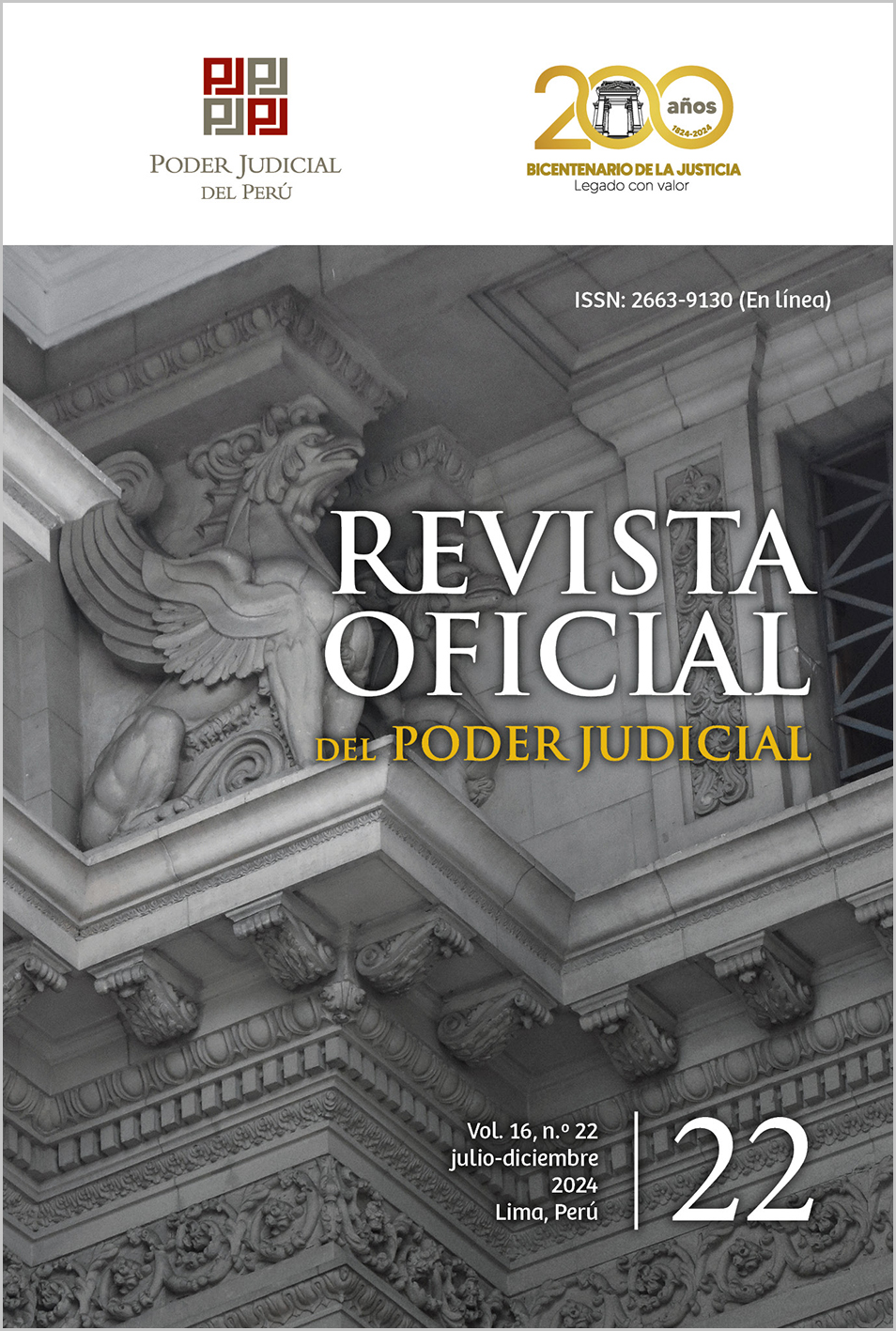Reference networks and their relevance for managing judicial precedent knowledge in Mexico
Abstract
Effective knowledge management in legal citation networks is vital in the modern practice of law, as it enables more consistent and fair application of judicial precedent, enables informed decision making and supports the law's sustained evolution, especially under technology evolution and pressure from the digital divide. The opportunities to improve and transfigure the practice of law are equally vast., are significant, the opportunities to improve and revolutionize legal practice are equally vast, as we move towards an increasingly digitized future, the ability to effectively manage and utilize legal knowledge will be increasingly valuable, not only to legal professionals, but to the integrity and effectiveness of the justice system.
Downloads
Metrics
Métricas alternativas
References
Ashley, K. D. (2019). Automatically extracting meaning from legal text: opportunities and challenges. Georgia State University Law Review, 35(4), 11171151.
Bernal, C., Camarena, R. y Martínez, A. (2018). El precedente en la Suprema Corte de Justicia de la Nación. Centro de Estudios Constitucionales Suprema Corte de Justicia de la Nación.
Cairampoma, A. (2014). La regulación de los precedentes administrati vos en el ordenamiento jurídico peruano. Revista de la Facultad de Derecho de la Pontificia Universidad Católica del Perú, (73), 483504. https://doi.org/10.18800/derechopucp.201402.014
Cross, F. B. y Spriggs II, J. F. (2010). The most important (and best) Supreme Court opinions and justices. Emory Law Journal, 60(2), 407-502.
Devlin, J., Chang, M.W., Lee, K. y Toutanova, K. (2018). BERT: Pre- training of deep bidirectional transformers for language understanding. https://arxiv.org/pdf/1810.04805.pdf
Fowler, J. H., Johnson, T. R., Spriggs II, J. F., Jeon, S. y Wahlbeck, P. J. (2017). Network analysis and the law: Measuring the legal importance of precedents at the U.S. Supreme Court. Political Analysis, 15(3), 324-346. https://doi.org/10.1093/pan/mpm011
García Ramírez, S. (2018). Panorama de la jurisprudencia interamericana sobre derechos humanos. Comisión Nacional de los Derechos Humanos.
García Ramírez, S. e Islas de González Mariscal, O. (2021). La justicia penal en México. Balance de dos décadas (2000-2020). Universidad Nacional Autónoma de México. Instituto de Investigaciones Jurídicas.
Garner, B. A., Bea, C., White Berch, R., Gorsuch, N. M., Hartz, H. L., Hecht, N. L., Kavanaugh, B., Kozinski, A., Lynch, S. L., Pryor, W. H., Reavley, T. M., Sutton, J. S., Wood, D. P. y Breyer, S. G. (2016). The law of judicial precedent. Thomson Reuters.
Janeček, V., Williams, R. A. y Keep, E. (2021). Education for the provision of technologically enhanced legal services. Computer Law & Security Review, 40(4), 120. http://dx.doi.org/10.2139/ssrn.3736101
Ladley, J. (2020). Data governance. How to design, deploy, and sustain an effective data governance program (2.a ed.). Academic Press.
Liu, Y., Ott, M., Goyal, N., Du, J., Joshi, M., Chen, D., Levy, O., Lewis, M., Zettlemoyer, L. y Stoyanov, V. (2019). RoBERTa: A robustly optimized BERT pretraining approach. https://openreview.net/forum?id=SyxS0T4tvS
López, D. E. (2000). El derecho de los jueces (2.a ed.). Legis.
Marín, M. E. (2020). El precedente en el derecho colombiano: la estructuración del concepto y su aplicación por la jurisprudencia de la Corte Constitucional. Derecho Público Iberoamericano, (15), 87112.
Nonaka, I. (1990). Management of knowledge creation. Nihon Keizai. Shimbun Press.
Nonaka, I. (1994). A dynamic theory of organizational knowledge creation. Organization Science, 5(1), 1437.
Nonaka, I. y Takeuchi, H. (1995). The knowledge-creating company: how Japanese companies create the dynamics of innovation. Oxford University Press.
Organización de las Naciones Unidas para la Educación, la Ciencia y la Cultura (Unesco) (s. f.). Tesauro de la UNESCO. Recuperado el 10 de marzo de 2024 de https://vocabularies.unesco.org/browser/thesaurus/es/
Osborne, M. (2004). Making the most of the best: Formulating a knowledge management strategy for a government advisory body. Australian Journal of Public Administration, 63(3), 4352.
Pérez, A. y Pessoa, P. (2015). Función de las cortes supremas de Brasil y Chile en la generación y gestión del precedente judicial entre lo público y lo privado. Revista de Derecho Valparaíso, 44(1), 173214.
Pilati, A. F. (2017). Precedentes e jurisprudência no sistema jurídico brasileiro: uma distinção necessária. Revista de Processo, Jurisdição e Efetividade da Justiça, 3(2), 7594.
Studwell, B. (2019, 4 de enero). Speeding up legal research by mapping citation networks. Medium. https://perma.cc/Z7YDJWXW
Taruffo, M. (1997). Institutional factors influencing precedents. En D. N. MacCormick, R. S. Summers y A. L. Goodhart (eds.), Interpreting precedents: A comparative study (pp. 437460). Ashgate Publishing.
Trejo, D. (2009). Identificación, análisis y aprovechamiento de la administración del conocimiento para la empresa y organización mexicana del siglo XXI. DIDAC.
Trejo, D. (2023). Inteligencia organizacional. Perspectiva desde la administración del conocimiento. Pacholabra Ediciones.
Wells, H. G. (1938). World brain. Doubleday, Doran and Co.
Copyright (c) 2024 Daniel Trejo Medina

This work is licensed under a Creative Commons Attribution 4.0 International License.
The authors retain their copyrights and register under the Creative Commons Attribution 4.0 International License (CC BY 4.0), which allows the use of the published material (adapt - remix, transform and build - and share - copy and redistribute - the material in any medium or format).
1. The journal allows authors to retain their copyrights of submitted articles without any restrictions.
2. Authors retain the right to share, distribute, copy, perform and publicly communicate the article published in Revista Oficial del Poder Judicial (e.g., place it in an institutional repository).
3. Authors retain the right to make a subsequent publication of their work, to use the article or any part of it (for example: a compilation of their work, notes for conferences, thesis, or for a book), as long as they indicate the source of publication (authors of the work, journal, volume, number and date).






















